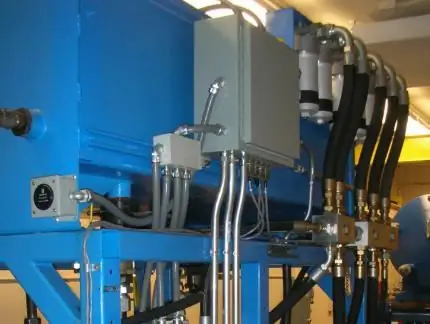2025 Author: Howard Calhoun | [email protected]. Last modified: 2025-01-24 13:10:35
Procurement department is a subdivision whose activities are aimed at providing the necessary production resources. At the same time, this activity must be carried out until the very beginning of the production process: from the emergence of such a need for resources to their use during the manufacture of products.
Definition of key terms

The supply department functions as part of the commercial activities of a business entity, which implies the implementation of various trade operations related to the acquisition of the necessary resources and the sale of manufactured products. The optimal organization of this structural unit is to some extent determined by the level of use of funds in production, the growth of labor productivity, the reduction in production costs, and the increase in profitability and profit of the enterprise. The same role is played by the material supply department in production management.
The main goal of this division is to bring specific resources to production participants in the required quantity and volume, on time and at minimal cost.
The supply department has a targeted character, which is determined by its focus and the purpose of ensuring the functioning of the manufacturing enterprise. First of all, we are talking about the needs of various consumers of products, services or work of a given business entity.
Purchasing department: its role and importance

Its role and meaning are as follows:
- the activity of this unit precedes production and not only serves to provide resources for the production process, but also independently creates, in a certain sense, its price and consumer value;
- determines and forms both the economic results of a business entity and the needs for resources and finished products of the consumers themselves;
- designation of the financial results of a manufacturing enterprise;
- as an activity of an enterprise, it serves as the main source of its competitiveness.
The significant share of material costs in total costs (about 60%) also confirms the significant importance of logistics.
Main tasks and functions of the supply department
1. Ensuring and then maintaining the optimal level of resource reserves, which will help minimize the costs associated with their procurement.

2. Ensuring accurate, prompt, comprehensive and fairly reliable supply of resources to consumers (sometimes even to the workplace).
The supply department performs the following functions: commercial and technological, as well as auxiliary and basic. The main functions include the acquisition of a resource, and the auxiliary functions include marketing and legal support.
Procurement categories
In modern large companies, employees of the supply departments are divided into several categories. This is due to the constant growth of volumes at enterprises, which entails the delimitation of the functions of planning, supply and saving goods. With such a structure, each division performs its functions and has a specific direction. The coordination of work within these structural units is carried out by the head of the supply department.
Structure of supply chain
As part of this organization of work, each individual unit should be responsible for a certain group of goods with full control over the supply of resources and their storage in warehouses.

It is necessary to note the fact that the structure of the supply chain is the main tool for achieving the goal of any business entity operating, for example, in the field of trade. Therefore, the process of structuring the logistics unit should be given close attention.
Procurement department is also known by another name -"Purchasing Department" This division is formed depending on the number of suppliers and the range of imported goods. The turnover of products must also be taken into account. Often in companies in such departments, there are more than ten suppliers per employee. Basically, work areas are fixed depending on the types of goods or product groups. Ordinary employees monitor the delivery of goods, the timeliness of payment for their delivery, and also plan subsequent purchases. The head of the supply department controls the implementation of approved purchase plans, monitors the turnover of goods, monitors the work of managers and, of course, provides general management. His responsibilities include ensuring the continuity and planned supply.
Recommended:
Planning and economic department: its functions and tasks. Regulations on the planning and economic department

Planning and economic departments (hereinafter PEO) are created for the effective organization of the economy of organizations and enterprises. Although often the work of such departments is not clearly regulated. How should they be organized, what structure should they have and what functions should they perform?
Real estate development and its role in economic development. The concept, types, principles and foundations of development

In the framework of this article, we will consider the organization of the real estate development system and its role in economic development. The basic concepts, types and principles of organization of the development system are considered. The characteristic features of the system in Russian conditions are considered
Recycled water supply - definition, scheme and features. Recycled water supply system

Recycling water supply is created for the purpose of ecological protection of the environment, economy, and also in case of emergency caused by the creation of a small enterprise. Profitability is determined by design calculations. In the future, it will only increase due to the increase in the cost of water and the growth of fines for environmental pollution
Power supply system: design, installation, operation. Autonomous power supply systems

Improving the quality of maintenance of buildings and industrial complexes has led to the widespread use of electricity sources and related infrastructure
Regulations on the personnel department. Structure and functions of the personnel department

General prescriptions from the regulation on the personnel department. Next, consider the structure, main tasks, a wide range of functions of the unit, its responsibility. In conclusion - interaction with other branches of the company's system

